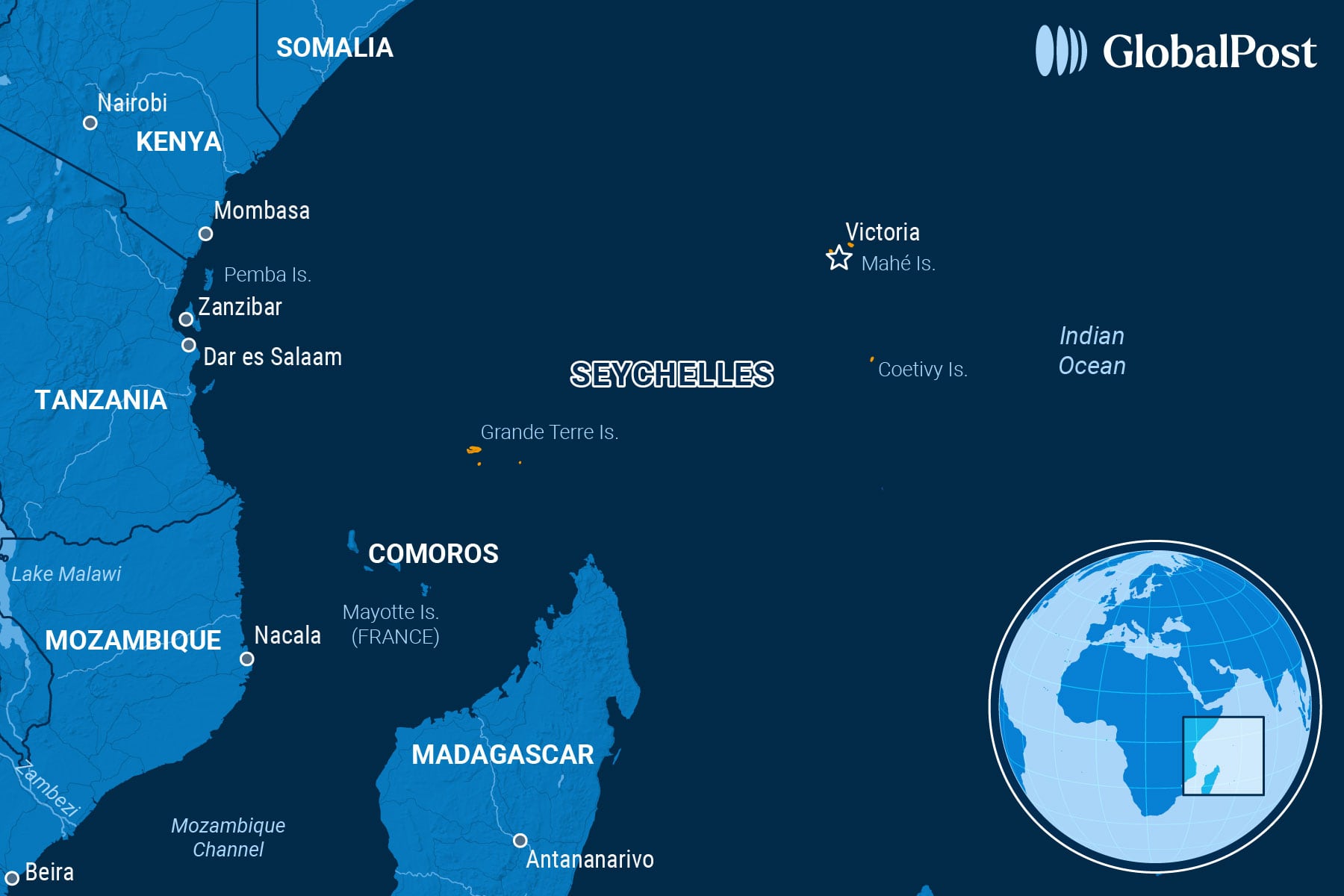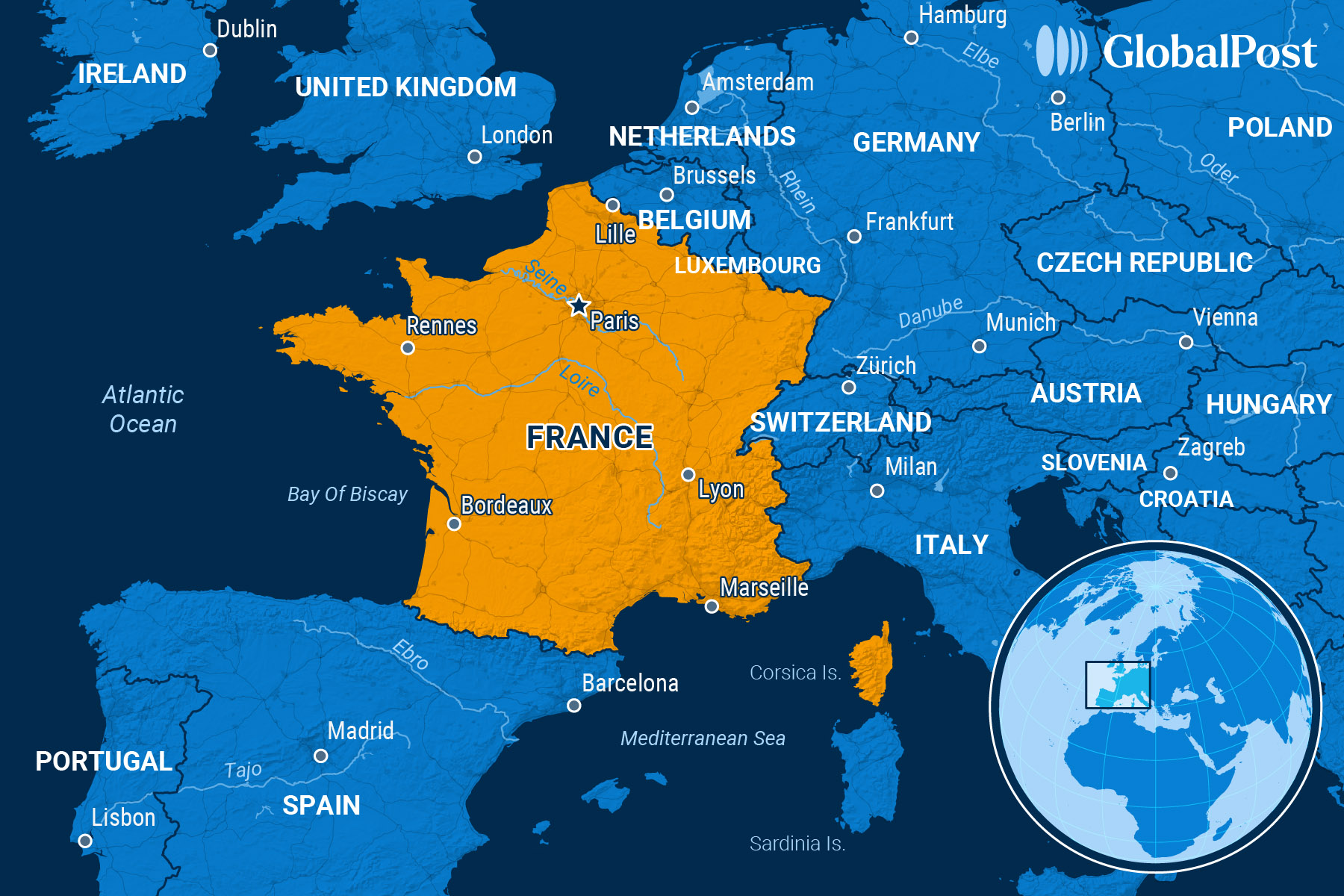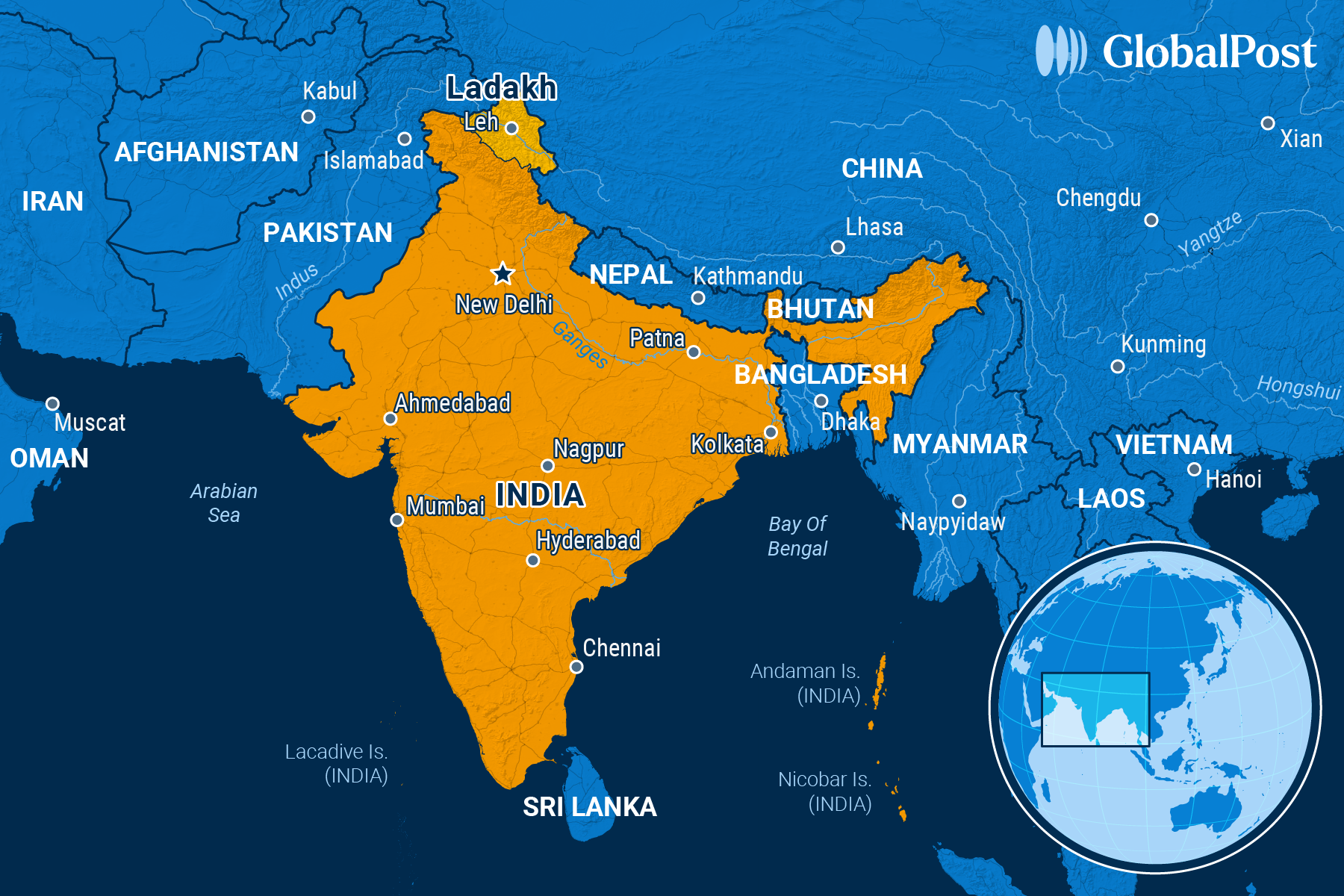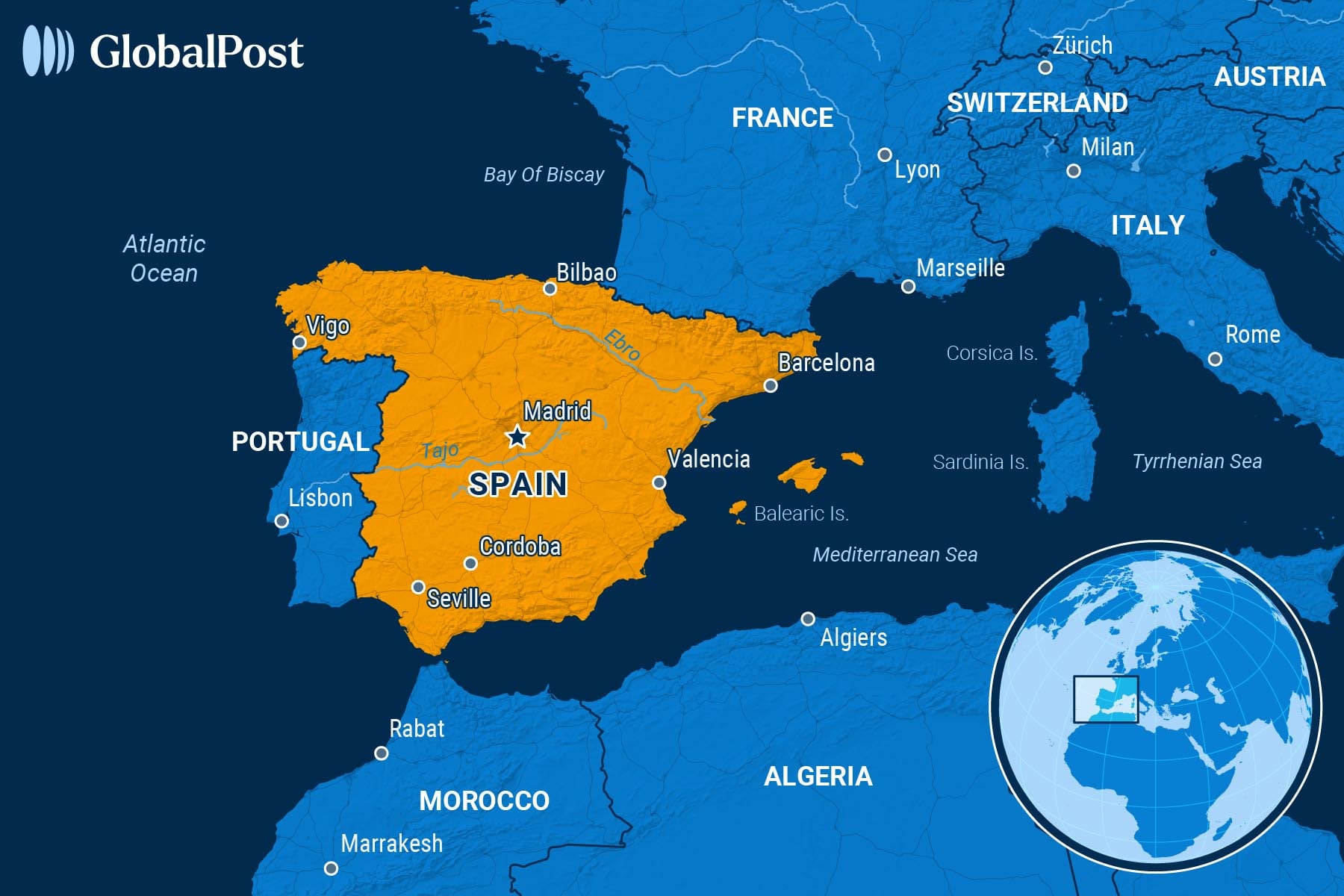In the Seychelles, Voters Will Choose To Stay the Course or Move On
NEED TO KNOW
In the Seychelles, Voters Will Choose To Stay the Course or Move On
SEYCHELLES
 When the incumbent president of the Seychelles, Wavel Ramkalawan, won office in 2020, it was a watershed moment for the archipelago nation off the east coast of Africa.
When the incumbent president of the Seychelles, Wavel Ramkalawan, won office in 2020, it was a watershed moment for the archipelago nation off the east coast of Africa.
The former Anglican priest, who lost his 2015 bid for office by fewer than 200 votes, was seeking to bring change to a country where the United Seychelles political party or its predecessor, the Seychelles People’s Progressive Front, has held sway since the 1977 coup that took place a year after independence from the United Kingdom.
Among his successes, Ramkalawan oversaw the release of findings from a truth and reconciliation process related to crimes and corruption – including money laundering and torture – committed under coup leader Albert René, who died in 2019, wrote the Africa Center for Strategic Studies.
But the president has suffered setbacks in his mission, too.
Ramkalawan is trying to convince voters that he can decrease the Seychelles’ 23-percent poverty rate while improving its per capita income of $17,000 – the highest on the continent.
The country’s status as a preeminent destination for “eco-conscious and high-end voyagers” is one source of revenue to help achieve those gains, noted Travel and Tour World. Some of the best fishing in the world – despite the threat of Somali and other pirates – is one of the attractions for visitors, added the Telegraph.
But those assets have also become political liabilities for Ramkalawan, who has allegedly become too cozy with investors from the United Arab Emirates and Qatar at the expense of transparency and environmental regulations, wrote Africa Confidential. The president’s critics say he takes the sheikhs’ cash for tourism developments – including allegedly selling off one of the country’s 115 islands – without properly consulting his constituents about the economic and ecological effects of his decisions, the Seychelles Independent wrote.
The country’s poverty is also creating social problems that the president is having trouble solving. As many as 6,000 people, or around 10 percent of the country, for instance, use heroin, according to African Insider. Rather than tackling that problem, the president appears more concerned about luxury resorts, critics say.
Bolstering critics’ claims of Ramkalawan’s authoritarian leanings was the authorities’ decision last year to file witchcraft charges against the opposition United Seychelles standard-bearer in the upcoming presidential election, Patrick Herminie. Prosecutors dropped those charges, the BBC reported, but they seriously undermined the president’s promises of inaugurating a democratic renewal in the country.
Herminie, who saw his party’s offices raided, had denied the accusations and called the case an “abuse of power” by the government.
“We do not have the right to arrest someone and put them in prison for nothing at all,” he said afterward. “In Seychelles’ history, there has never been, until now, a political party leader arrested for superstition and witchcraft. This is something new, and it is shameful for Seychelles.”
THE WORLD, BRIEFLY
Former French President Sarkozy Sentenced to Five Years in Jail for Criminal Conspiracy
FRANCE
 A Paris court on Thursday sentenced former French President Nicolas Sarkozy to five years in prison after finding him guilty of criminal conspiracy in a case centering on alleged illegal donations to his 2007 presidential campaign received from the late Libyan dictator, Muammar Gaddafi, Politico reported.
A Paris court on Thursday sentenced former French President Nicolas Sarkozy to five years in prison after finding him guilty of criminal conspiracy in a case centering on alleged illegal donations to his 2007 presidential campaign received from the late Libyan dictator, Muammar Gaddafi, Politico reported.
The prosecution alleged Sarkozy had promised Gaddafi he would help him combat his state’s reputation as a pariah with Western countries in exchange for the funds, the BBC noted.
The court cleared him of other charges, including passive corruption and illegal campaign financing, and said he allowed his close aides to reach out to Libyan officials in an effort to secure financial support for his campaign.
The former president claims the case is politically motivated and, speaking to reporters after the hearing, said of the verdict, “This injustice is a scandal.”
Sarkozy, 70, had expected to avoid jail time by appealing the ruling, which would have delayed sentencing until after the appeal trial.
However, the presiding judge in the case, Nathalie Gavarino, ruled that the seriousness of the charges warranted his detention independent of any appeal. He was also ordered to pay a fine of about $117,000. Sarkozy, who served as president from 2007 to 2012, is likely to become the first modern French president to serve prison time.
The case dates back to 2011, when Saif al-Islam, Gaddafi’s son, first said Sarkozy had received millions of his father’s money for his campaign between 2005 and 2007. The investigation began in 2013 and, a year later, Lebanese businessman Ziad Takieddine claimed to have written proof that Sarkozy’s campaign bid was “abundantly” financed by Libya, and that the $58 million worth of funding continued during his term.
Nine of Sarkozy’s former close aides were also convicted, including Claude Guéan, his right-hand man, who was found guilty of passive corruption and falsification, and former minister Brice Hortefeux was found guilty of criminal conspiracy, Le Monde wrote.
Overall, the ruling indicated that the court believed the men conspired to obtain Libyan funding for Sarkozy’s 2007 campaign, but that judges were not convinced the former conservative president himself was directly involved or that any Libyan funds were actually used in his successful campaign.
Still, according to French law, a corrupt scheme can be a crime – even if no funds were exchanged or their use cannot be proven, the court said.
After losing his re-election bid in 2012, Sarkozy has faced multiple criminal investigations. In 2021, he was found guilty of attempting to bribe a judge in an incident dating back to 2014, becoming the first former French president to get a custodial sentence. In February 2024, he was convicted of overspending on his 2012 reelection campaign and then hiring a public relations firm to cover it up.
Deadly Youth-Led Protests Rock India’s Ladakh region
INDIA / LADAKH
 Indian authorities imposed sweeping security restrictions in the northern Ladakh region on Thursday, a day after deadly, youth-led protests demanding autonomy and constitutional protections shook the remote Himalayan territory, the Associated Press reported.
Indian authorities imposed sweeping security restrictions in the northern Ladakh region on Thursday, a day after deadly, youth-led protests demanding autonomy and constitutional protections shook the remote Himalayan territory, the Associated Press reported.
Officials banned gatherings of more than five people in two districts and imposed a curfew in Leh, the regional capital. Police said at least 40 people were arrested after Wednesday’s unrest, which left four people dead and dozens injured, including police officers.
Violence erupted in Ladakh – a strategic region nestled between India, Pakistan, and China – on Wednesday during a 15-day hunger strike, with demands for greater constitutional safeguards and statehood from India, which has governed the region federally since 2019.
Tensions flared after two participants collapsed, prompting a local group to call for a regional strike. Hundreds later marched toward government offices and the headquarters of India’s ruling Bharatiya Janata Party (BJP) in Leh, where clashes broke out. Protesters set fire to police and paramilitary vehicles, as well as government buildings and the BJP office, Al Jazeera wrote.
It was the deadliest demonstration in Ladakh in decades, with observers saying that it highlighted the growing local resentment against the central government over the self-rule issue.
Ladakh, part of Indian-administered Kashmir, saw its status change in 2019 when New Delhi revoked Kashmir’s semi-autonomous status and split the region into two federally administered territories, namely Jammu and Kashmir, that had a legislature, and Ladakh, that did not.
While many initially welcomed the move, concerns soon grew over land grabs, trade losses, and environmental risks in the fragile high-altitude region. Others objected to the lack of elected local leaders.
Analysts said the clashes were the culmination of years of protests organized by local civic groups to address grievances, including demands for full statehood and protection under the Indian Constitution, which grants autonomy over land, jobs, and resources to Indigenous-majority regions.
Meanwhile, the Indian government blamed local climate activist Songnam Wangchuk, who spearheaded the hunger strike, for the violence, saying he was “misleading the people through his … references to Gen Z protests in Nepal” – referring to the recent youth-led demonstrations that ousted Nepalese Prime Minister KP Sharma Oli earlier this month.
Government officials also alleged that the main opposition Congress Party was behind the violence, claiming it was seeking to instigate similar unrest seen in other Gen Z protests in Indonesia and the Philippines, according to the New Indian Express.
However, Wangchuk countered that he never called for violence, but noted that Wednesday’s demonstrations highlight the growing disillusionment of younger people over the government’s failure to address their concerns, including employment.
Ladakh has a 97 percent literacy rate, which is higher than India’s national average of about 80 percent. Yet, a 2023 survey showed that 26.5 percent of the region’s graduates are unemployed – double the national average.
Spanish Court Convicts Man of Abusing Partner in First Case Involving an Animal
SPAIN
 A Spanish court this week found an 18-year-old man guilty of killing a puppy dog in front of his partner to inflict psychological damage on the woman, the first ruling to apply a gender violence law to a case of animal abuse, Agence France-Presse reported.
A Spanish court this week found an 18-year-old man guilty of killing a puppy dog in front of his partner to inflict psychological damage on the woman, the first ruling to apply a gender violence law to a case of animal abuse, Agence France-Presse reported.
A specialist gender violence court on the island of Gran Canaria convicted the man of tossing the couple’s four-month-old puppy off a cliff while also threatening to take his own life. The court handed him a suspended sentence of one year and one day in prison and barred him from approaching or contacting the woman for two years and one day.
“The animal’s death was intentionally employed as a means to inflict psychological damage,” the court said, arguing that the case should be recognized as “vicarious violence against a companion animal,” and which needs “stronger punitive measures.”
Vicarious violence, or violence by proxy, generally refers to a form of abuse where a partner hurts a child with the intent of causing suffering for their partner. In Spain, for example, more than 60 children have been murdered by their fathers or by their mothers’ current or former boyfriends in the past 12 years.
However, this case marks the first instance in which a Spanish court applied the law against vicarious violence to an animal. Spain’s legal watchdog, the CGPJ, noted, describing it as a “groundbreaking ruling.”
Spain has made a big effort to fight gender-based violence in the past few decades. A 2005 law introduced a series of support measures for women, including specialized courts, free legal support, emergency housing, and prosecution of abusive partners without a victim’s complaint.
DISCOVERIES
Master of Disguise
Pygmy seahorses (Hippocampus bargibanti) are so good at camouflage that, until at least 45 years ago, they were completely unknown.
While knowledge of their biology remains fragmentary, mainly because it is hard to find them or keep them in aquaria, a new study analyzed the genome of these seahorses and found why they are so elusive.
Pygmy seahorses, one of the smallest vertebrates, measuring about the size of a thumbnail, live in symbiosis with gorgonian corals in the western Pacific Ocean, clinging to the branches with their tails, day and night, waiting for food to pass by.
Through evolution, pygmy seahorses evolved small knobs on their skin, which mimic the shape and color of the coral’s polyps and allow them to blend seamlessly into the reef. Their snouts are also shortened to the length of polyps, making them even more difficult to spot.
“Seahorses usually have an elongated snout that resembles a horse. However, this would set the pygmy seahorse apart from the coral’s shape,” lead study author Axel Meyer said in a statement. “We were highly interested in finding out at what stage of development this deviating appearance of the pygmy seahorse is caused to provide good camouflage and which genes are responsible.”
To carry out the research, the team looked at the expression pattern of the pygmy seahorse’s genes at different stages of development of the snout region.
In the early stages, all seahorse species have short heads and squat facial proportions that align with the “baby schema,” cute features that trigger caregiving responses, Smithsonian Magazine explained.
“Normally, a combination of different genetic components causes the snout of a seahorse to grow proportionally faster than other parts of the body from a certain age and thus become elongated,” said Meyer. “In the pygmy seahorse, however, we have now discovered that these different growth rates are suppressed because the hoxa2b gene has been lost.”
As a result, the pygmy seahorse’s head never outgrows the “childlike” developmental stage and can visually merge with the corals.
Researchers also analyzed the genetic basis of the skin color, the formation of skin knobs, and the immune system of these seahorses. Among the many things they found, they noticed that the pygmy seahorse has shed an unusually high number of immune genes throughout its evolution, having diverged from full-sized seahorses about 18 million years ago. In terms of the immune system, they also have the smallest known set of genes of all vertebrates.
Meyer explained that this is probably related to the seahorses’ tolerance to coral toxins, which protect them from microbes, so their immune systems no longer need the genes that would normally provide this protection.
Moreover, the sex roles of seahorses have been switched, and males incubate the eggs in their brood pouch. Since the eggs are not genetically identical to the cells of the male’s body, shedding immune-system genes was essential to prevent them from being attacked as foreign tissue.
Pygmy seahorses are prime examples of evolution, researchers said, demonstrating that what is advantageous for survival prevails, while what is unnecessary disappears.
At the same time, these seahorses have genetically evolved to live alongside gorgonian corals so perfectly that they cannot live without them.
“The research reveals a cruel irony,” Richard Smith, a marine biologist not involved in the study, told the New York Times. “The very traits that made these sea horses successful, such as their perfect mimicry, tiny size, and specialized biology, are now their greatest vulnerability.”
